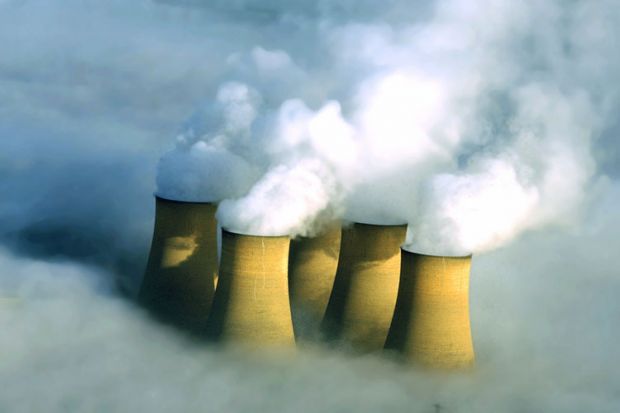Books on climate change are now nearly as common as smashed global temperature records, and it is a challenge for authors to make their offerings stand out. Tim Flannery bids for distinctiveness by highlighting the hopes for a solution to our warming worries, and indeed a solution of a rather novel kind.
He points out that policies for emissions reductions – generating fewer greenhouse gases – have not really worked so far. The carbon we have released already and will inevitably still produce means that we are committed to a warmer world for decades, even if we succeed in implementing sizeable emissions cuts. In this context, several others have tried to lead opinion towards an enthusiasm for a technical fix. They want us to geoengineer solutions, with leading states urged to help manage the planetary climate by blocking or reflecting some of the Sun’s heat. But these strategies have big risks associated with them, are hard to supervise internationally and would be hard to get out of once we had started. This book’s new emphasis is on an alternative solution, which aims to restore the balance that existed before we began overproducing carbon; the idea is to promote “carbon drawdown”, or CO2 removal. Flannery sees this as a genuine alternative to the two well-known options and christens it “the third way” in climate policy.
In principle, carbon could be drawn down using a variety of strategies. We might finally get to the bottom of photosynthesis, produce biomass in vast quantities and then lock it away in building materials. Or we could inject carbon dioxide into deep sea-floor sediments where the pressure of the overlying water would hold it in place until it stabilises. Carbon dioxide could even be turned into huge “reservoirs” of dry ice kept in natural cold stores in the Antarctic.
Flannery is well placed to know about these possibilities, because he is one of six judges for the Virgin Earth Challenge, a scheme offering a $25 million (£16.5 million) prize for proven, broadly sustainable approaches to withdrawing about 1 billion tonnes of carbon-equivalent every year for a decade. A few successful innovations of that size, possibly further scaled up, could make a decisive difference. And because they aim to remove the extra greenhouse gases that we have released into the atmosphere, such interventions should be ecologically benign.
There’s no doubt that Flannery is excited about the third way offered by CO2 removal. The worry is that, as with the last initiative of that name, clear positive results may not be forthcoming. This is reflected in this book’s structure. Although the third way is the study’s leading theme, it really occupies only the last quarter of the text. Before that, Flannery offers a good and freshly written overview of how serious the problem has become before moving on to fracking, nuclear power and other unsatisfactory responses. But that leaves space for only a limited assessment of the CO2-removal paradigm. As he acknowledges, several proposals for drawdown appear rather expensive or impractical, and the Virgin Earth Challenge has not yet identified a winner. Although he sells the concept of drawdown well, Flannery does not quite establish that the atmosphere looks hopeful.
Steven Yearley is professor of the sociology of scientific knowledge and co-director of the SKAPE Centre, University of Edinburgh.
Atmosphere of Hope: Solutions to the Climate Crisis
By Tim Flannery
Penguin, 288pp, £7.99
ISBN 9780141981048 and 1055 (e-book)
Published 6 October 2015
POSTSCRIPT:
Print headline: The third way: out of sight
Register to continue
Why register?
- Registration is free and only takes a moment
- Once registered, you can read 3 articles a month
- Sign up for our newsletter
Subscribe
Or subscribe for unlimited access to:
- Unlimited access to news, views, insights & reviews
- Digital editions
- Digital access to THE’s university and college rankings analysis
Already registered or a current subscriber?




